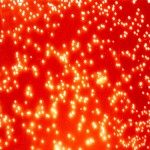Lien vers Pubmed [PMID] – 35196810
Lien DOI – 10.1128/spectrum.02376-21
Microbiol Spectr 2022 02; 10(1): e0237621
The Klebsiella pneumoniae species complex (KpSC) is a leading cause of multidrug-resistant human infections. To better understand the potential contribution of food as a vehicle of KpSC, we conducted a multicentric study to define an optimal culture method for its recovery from food matrices and to characterize food isolates phenotypically and genotypically. Chicken meat (n = 160) and salad (n = 145) samples were collected in five European countries and screened for the presence of KpSC using culture-based and zur-khe intergenic region (ZKIR) quantitative PCR (qPCR) methods. Enrichment using buffered peptone water followed by streaking on Simmons citrate agar with inositol (44°C for 48 h) was defined as the most suitable selective culture method for KpSC recovery. A high prevalence of KpSC was found in chicken meat (60% and 52% by ZKIR qPCR and the culture approach, respectively) and salad (30% and 21%, respectively) samples. Genomic analyses revealed high genetic diversity with the dominance of phylogroups Kp1 (91%) and Kp3 (6%). A total of 82% of isolates presented a natural antimicrobial susceptibility phenotype and genotype, with only four CTX-M-15-producing isolates detected. Notably, identical genotypes were found across samples-same food type and same country (15 cases), different food types and same country (1), and same food type and two countries (1)-suggesting high rates of transmission of KpSC within the food sector. Our study provides a novel isolation strategy for KpSC from food matrices and reinforces the view of food as a potential source of KpSC colonization in humans. IMPORTANCE Bacteria of the Klebsiella pneumoniae species complex (KpSC) are ubiquitous, and K. pneumoniae is a leading cause of antibiotic-resistant infections in humans. Despite the urgent public health threat represented by K. pneumoniae, there is a lack of knowledge of the contribution of food sources to colonization and subsequent infection in humans. This is partly due to the absence of standardized methods for characterizing the presence of KpSC in food matrices. Our multicentric study provides and implements a novel isolation strategy for KpSC from food matrices and shows that KpSC members are highly prevalent in salads and chicken meat, reinforcing the view of food as a potential source of KpSC colonization in humans. Despite the large genetic diversity and the low levels of resistance detected, the occurrence of identical genotypes across samples suggests high rates of transmission of KpSC within the food sector, which need to be further explored to define possible control strategies.

